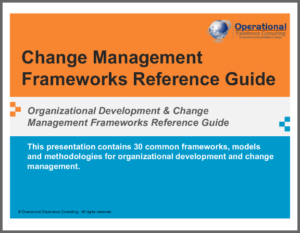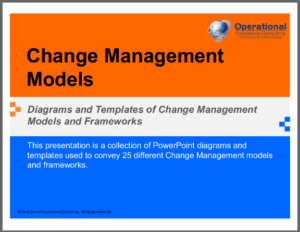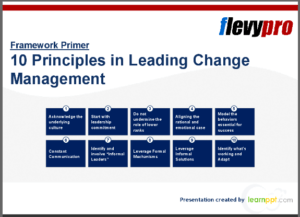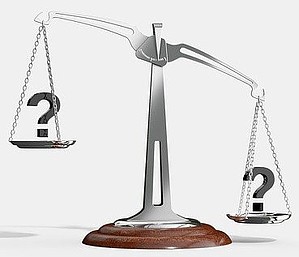Among many models of the change process, none embrace the process of Transition like the William Bridges Transition Model.
This post explores the nuances of the Bridges Transition Model, dives into the uniqueness of each piece, and identifies at how strategists and project managers can leverage it.
What Is the William Bridges Transitions Model?

The William Bridges Transition(s) Model was developed over 30 years ago. Originally developed by William Bridges, the consulting work in transition management based on the model continues through William Bridges Associates, which is currently led by Susan Bridges.
One of the key tenets of the Bridges Model is the distinction between Change and Transition:
- Change – Change is situational. It is simply what happens. It’s the event – in business, a new leader, new ownership, new product line, or new process.
- Transition – Transition is a person’s individual response to the change. It’s what they make it mean – the attitudes, beliefs, and actions they adopt in reaction to the change.
Bridges’ Model deals with the emotional aspects of the change – the transition part. These emotional aspects build upon the Kubler-Ross Change Curve, which models the emotional phases people pass through in coping with a change.
The Bridges transition flows through three phases, or zones:
- Ending Zone – A transition actually begins with an Ending – of prior situations and ways of doing things. People decide and come to grips with what they will leave behind – as well as what they will bring with them through the transition.
- Neutral Zone – After leaving behind old situations and old ways, there is a place of transition which can at once be distressing and liberating. Realignment and re patterning – mostly in the mind through learning and adaptation – takes place as new ways emerge.
- New Beginning – People find a new sense of clarity as they gain their direction and their footing. With renewed purpose, fresh understanding of roles and structure, and completion of reorientation in the Neutral zone, people experience a new rush of energy and increase in productivity.
Here is a short 5-minute video – “Change Model: Bridge’s Transition Model” – that provides a nice overview and further clarification:
Let’s take a deeper dive into each of the three phases, or zones, of the Bridges Transition Model.
Zone 1: Transitions and Endings
 People experience two sides of change as they let go of the past:
People experience two sides of change as they let go of the past:
- Rational – People often grapple with leaving behind things that were good. The way things were probably brought happiness, prosperity, valuable and cherished relationships, and more. It is only logical to think things could continue down that same path.
- Emotional – This involves letting go of personal feelings. It can take time to process. There can be feelings of denial – a resistance to accepting that things are changing. These can be followed by feelings of anger and loss. People can become disoriented and grasping for something solid – something to take the place of what they are losing.
For most people, Endings are hard. The graphic indicates that the Endings process is quick or nonexistent for a small fraction of people, who skip Endings and move immediately into the Neutral Zone or New Beginnings.
Most people, however, pass through the Endings zone. The downward sloping line indicates that everyone has a different rate at which they process the change, move through the Transition, and progress through the Endings zone. It takes some time before most people pass through to the Neutral Zone – and some never fully do.
Zone 2: Transitions and the Neutral Zone

When people transition to the Neutral Zone, they have accepted that the change has happened, and that they have to move on. However, they still are largely moving into the unknown.
As people enter the unknown, their productivity will naturally decline. The majority of their attention will be on coping with the transition.
The Neutral Zone can be a time of confusion and uncertainty for people. They can alternately look back at the certainty of the past as well as the potential certainty of a future with New Beginnings.
- Looking backward – Depending on how well-prepared people are for the change, their transition may continue to bring them through a series of emotions – depending in part on their attachment to the past. Some may continue to be skeptical about the merits of the change, may become demoralized, and may even come to resent the fact that they have been forced to grapple with this change.
- Looking forward – At the same time, people get increasingly clearer glimpses of the future – the other side of the Neutral Zone. They experience glimpses of how the new system might work better, how a new leader might bring fresh ideas, or how both they and the organization may benefit from some changes happening.
The graphic shows, in the upper region, how the pattern of people in the Neutral Zone initially follows a long flat transition before they enter the New Beginnings stage. Most people take some time as they oscillate between looking backward and looking forward, until they finally get a hold of the latter and gain momentum moving forward.
Note that a small fraction of people will never make it through the Neutral Zone.
Zone 3: Transitions and New Beginnings

By the time people enter the New Beginnings zone, they are largely embracing the change. In fact, they have bought into it and are willing and eager participants.
People who have gotten this far have a new sense of control. They have confidence from having made it through the transition to this point.
They also have a sense of history – something that anyone new does not possess. There probably is some cultural value to this and can be passed on to newcomers.
Note that with New Beginnings, which starts at the upper left of the graphic, some people charged right in, skipping Endings and the Neutral Zone. However, the vast majority of people do not.
It takes time for most people in the organization to fully take ownership of the new way of doing things. Those who have transitioned early need to be aware that things will keep improving as more and more people transition into and through the New Beginnings phase.
Strategy and the Bridges Transitions Model
Strategy without implementation is not worth much! The Bridges Transition Model helps with that distinct aspect of how people react to a change.
—————————————-
I recommend these strategy resources on FlevyPro (paid links):
| Change Management Frameworks Reference Guide 402-slide PowerPoint deck $179.00 |
Change Management Models 136-slide PowerPoint deck $59.00 |

|

|
| 10 Principles in Leading Change Management 17-slide PowerPoint deck $25.00 |
Lean Change Management 21-slide PowerPoint deck $25.00 |
 |
 |
—————————————-
Change is external and is concerned with outcome. In that sense, strategy is external and also concerned with the outcome. Strategy tends to be relatively impersonal – focused on the goals and effects.
Transition, by contrast, is internal and brings people through the process. The key to implementing change in any organization is to bring people along in the process.
The Bridges Transition Model provides a more internal lens, allowing the strategist to see strategic change from a human point of view. This allows executives and strategists to adjust their expectations to add time for personal assimilation of changes into plans.
Most leaders focus on change and not transition – to their peril. Changes will be successful if people are brought along through the change.
Project Management and Bridges’ Transitions Model
One of the key insights for project managers provided by the Bridges Model is the distinction between Change and Transition. Projects are often part of, or the results of, the external Change, and the implementation of the project needs to ensure that people are being helped through the Transition.
The additional unique insight is in how Bridges’ Transition Model maps to the Kurt Lewin Change Management Model, and even further to the John Kotter Change Model. This can be very helpful, as there are certain unique strengths to each. Project managers can use them to create an effective hybrid approach to change management.
Here is what each uniquely brings to the table:
- Bridges – The Bridges Model uniquely distinguishes Transition from Change. Also – not illustrated in the comparison chart above but in the Bridges Model graphics in the previous sections – the Transitions of people through each of the Zones is not uniform. Each individual transitions differently, and project managers need to tailor their messaging accordingly.
- Lewin – The Lewin Change Model uniquely characterizes Change as occurring in three simple but unique stages. Project managers can monitor the transition of a change through these three processes as part of project status monitoring.
- Kotter – the Kotter Change Model provides a prescriptive 8-step process for implementing a Change. It specifies ‘what to do next’ while navigating a program for change. It is more implementation and goal oriented than the other two. As shown above, the 8 steps map well to the three stages of the Lewin Model and the three zones of the Bridges Model.
Project managers can plan a tailored approach that takes elements from each of these powerful models and combines them into an effective change implementation plan for the project.
—————————————-
I recommend these PM templates (paid link):

—————————————-
Strengths and Weaknesses of the Bridges Transition Model
 The following are some strengths and weaknesses to consider regarding the Bridges Transition Model:
The following are some strengths and weaknesses to consider regarding the Bridges Transition Model:
Strengths:
- Impact of Productivity – Through a transition, productivity begins to decline, hits a low point, then begins to climb again. Acknowledging that provides a strength – and provides the opportunity to manage the situation to minimize the decline of productivity.
- People centric – Focuses on the people aspect of change management, where changes will have limited success without successful personal transitions.
Weaknesses:
- Not prescriptive – The model does not prescribe steps, but rather can be paired with such a model, such as John Kotter’s 8-step Change Model.
- Focused only on emotional aspects – Some say that the model is narrow in scope. However, I think it applies broadly, although it is focused on the transition side.
Conclusion
Change is inevitable; it happens of its own volition, must happen in order to move forward, and you will hold yourself back if you do not accept it. The William Bridges Transitions Model provides a helpful framework for project managers and strategists to lead change.
What experience do you have applying the Bridges or any other change management models?
For a 10-minute Program Management oriented take on the Bridges Transition Model, I recommend “Bridges Transition Model Explained” by Expert Program Management (EPM):
